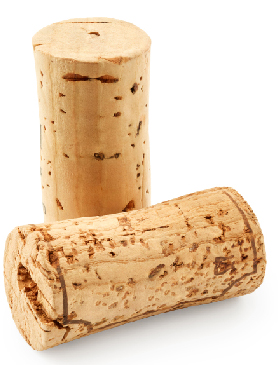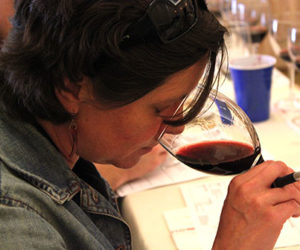“More attention to ullage management and SO2 levels would help.”
“Pay closer attention to overall fermentation health.”
“Prioritize cellar hygiene.”
If you entered wines in the 2022 WineMaker International Amateur Wine Competition and your scoresheets were marked with one or more of the abbreviated suggestions above, there’s a strong chance your wines were evaluated by Judge 21, yours truly. For a few days in April, I had the pleasure of tasting amateur wines from around the world with a diverse team of thoughtful and talented wine judges. The creativity and care expressed in the wines were obvious, but as the flights continued to pile up, I realized that I was giving a lot of the same commentary from wine-to-wine. Often, it seemed like a few common, preventable flaws were stifling wines that would have otherwise been delightful. The limited time and space allotted to make suggestions on the scoresheets felt insufficient, and I even considered leaving my contact information on a few because I thought a broader conversation might be helpful. This feeling nagged at me for a few weeks before I realized I had the perfect platform I’d hoped for all along: This magazine!
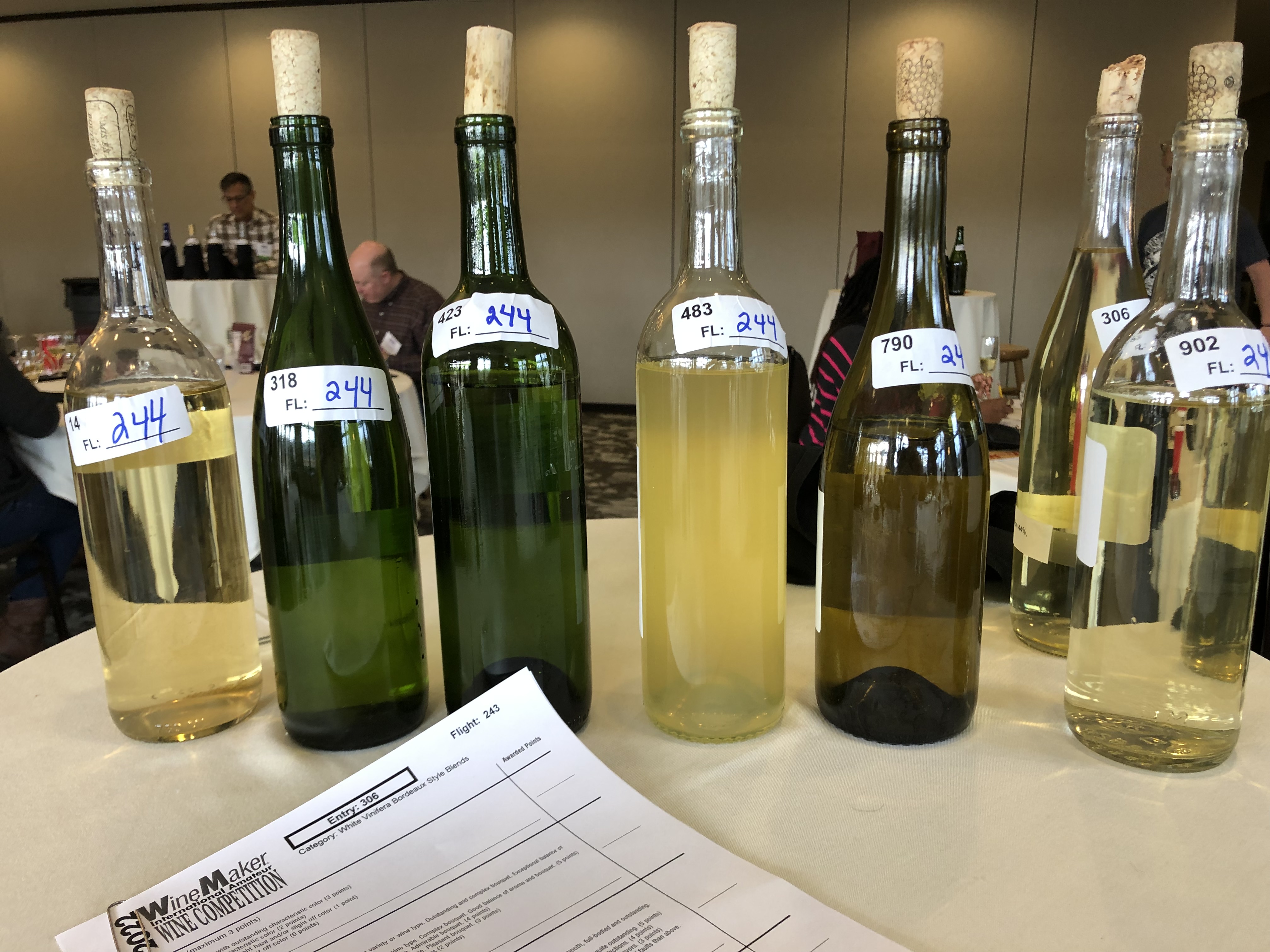
I’m not trying to push a perfectionist winemaking ethic here; far from it, in fact. I’m as aware as anyone that a flaw can present as a beauty mark in the right context. Furthermore, it’s important to keep in mind that many of the classes of chemical compounds in wines have both pleasant and unpleasant examples — courting the pleasant ones sometimes creates the perfect conditions to generate or hang on to the unpleasant ones. A hint of volatile acidity might amplify the red fruit aromas of a rich, bold Sangiovese. A little hydrogen sulfide might be tolerable in Sauvignon Blanc if it’s reflective of the reductive winemaking needed to preserve that variety’s signature thiol aromatics. There are real-world instances of technical flaws improving or at least not ruining a wine, but those aren’t what I intend to talk about.
When I pitched this article, I realized a discussion of how wine competitions work might help to explain why flaws factor so heavily in scoring. After all, many of the world’s great commercial wines are far from flawless; occasionally, as mentioned, a flaw here or there might even make a wine more appealing. So why doesn’t that hold true in the context of a wine competition? It’s simple, really: Wine competitions are all about first impressions. Think of it like dating — in a perfect world, you’d get to spend some quality time with a wine, learning about what made it the way it is, where it’s been, where it’d like to be, not leaving a single stone unturned or question unasked. Wine competitions, though, they’re a lot like speed dating. The sheer volume of wines to be tasted over a short period of time necessitates that judges develop a streamlined heuristic to speed up the process — often this places priority on seeking out a wine’s red flags: Flaws. Whether a red flag is a deal breaker (crossing the boundary between flaw and fault) or not is another question; sometimes a flaw is present for stylistic reasons, sometimes it’s just not offensive enough to spur fixation. Regardless, the mere presence of a detectable flaw is almost always reflected in a wine’s overall score — learning how to prevent and address some of the most common ones is a surefire way to improve your medal count.
Testing . . . 1, 2, 3
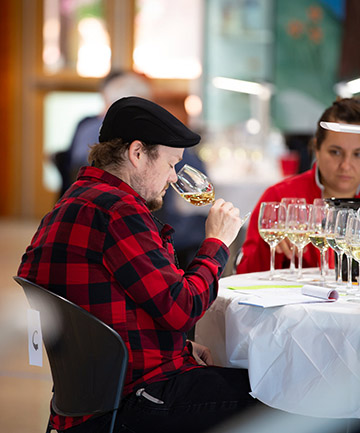
Eighteenth century wine enthusiast Ben Franklin once said “An ounce of prevention is worth a pound of cure.” He wasn’t talking about wine flaws, but he very well could have been. Most of the flaws present in wine are totally preventable, but without an understanding of a wine’s chemistry, it’s difficult to know where issues may arise. I’m not advocating that winemakers take a recipe-style approach, chasing the perfect pH or Brix, but knowing where a few key analytical data points stand can mean the difference between effortlessly preventing flaws or scrambling to correct them. For that reason, I’m of the belief that one of the most meaningful upgrades that can be made to any home winery is an increase in analytical capability. Analytical data, when used correctly, is almost like a GPS system for the winemaking process. It’s not going to take control of your steering wheel, but it can tell you where to turn and what hazards may lay ahead.
While most home winemakers are acquainted with some level of juice or wine analysis — that’s what you’re doing every time you take a hydrometer reading — the data points that have the greatest impact on the quality of a wine used to be tough to quantify at an amateur scale. Until very recently, the affordability of an analytical device and its accuracy almost always had an inverse relationship. A book of litmus paper and pack of titrets might only set you back $20–30, but the pH and free SO2 numbers they provide are far from reliable. On the other end of the spectrum, an OenoFoss analyzer can provide accurate, robust analyses, but the vast majority of amateur winemakers probably aren’t looking to drop tens of thousands of dollars for that data.
Luckily, there are solutions available that close the gap quite a bit; for a few hundred bucks, a home winemaker can cobble together a pretty effective wine lab. A simple pH meter and aeration-oxidation kit (for determining free SO2) can be had for under $200. For a few hundred dollars more, instruments like those available from Vinmetrica can perform these and other analyses, including yeast assimilable nitrogen (YAN), malic acid, and dissolved oxygen.
There are a maddening number of chemical data points in any juice or wine, but there are three that have an outsized impact on the sorts of flaws that inspired this article: Free SO2, pH, and YAN. Being able to adequately monitor each can have immediate and positive effects on overall wine quality. Let’s take a closer look at each.
Tough Love on the Redox Spectrum
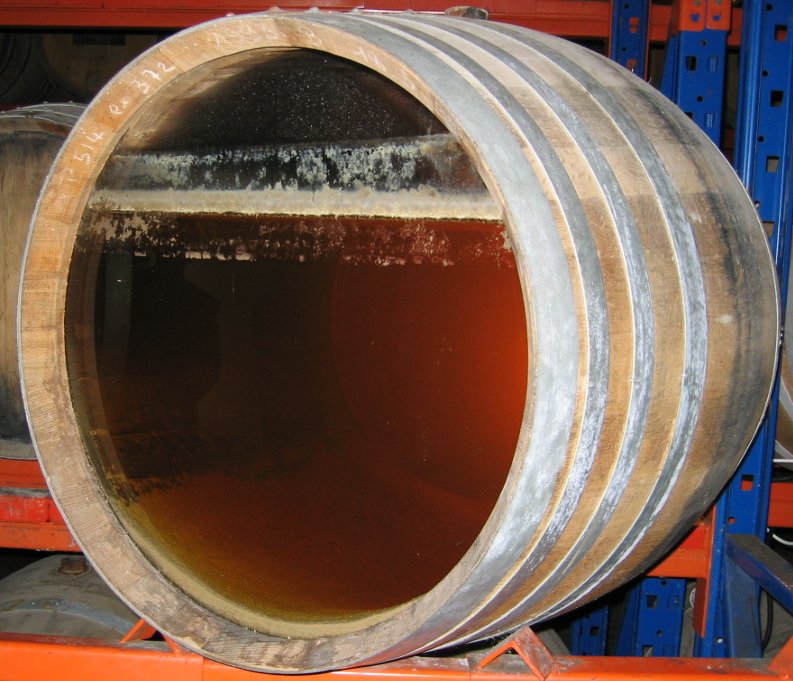
Though they’re entirely different classes of flaws, oxidation and reduction are best understood as occupying opposite ends of the same chemical spectrum. In the most generic sense, compounds are said to be oxidized when they lose electrons, and reduced when they gain electrons. In the context of wine, oxidation and reduction center around two key elements: Oxygen and sulfur. When excess oxygen is dissolved into a wine or must, it behaves as an oxidizing agent, interacting with polyphenols and ethanol, thereby altering the flavor, aromatic profile, and color of the end product.
On the other end of the spectrum, the anaerobic conditions of fermentation result in the reduction of sulfur and sulfur-containing compounds, producing less-than-pleasant aromatics like hydrogen sulfide and mercaptans. If you read those last two sentences and they seem incongruent, that’s because they are. The maddening aspect of the redox (or oxidation-reduction) spectrum, as it applies to winemaking, is that a push just a little too far in either direction leads to flawed wines. Making things more difficult, the stage of the winemaking process and condition of the wine often necessitates a significant push in either direction. If that wasn’t daunting enough, the style of wine and initial juice chemistry will have a potent impact on defining that wine’s redox “sweet spot.” Understanding how and when to thread the needle between oxidation and reduction is of paramount importance in the production of technically excellent wines.
Far and away the most prevalent flaw that I encountered at this year’s competition, oxidation, is as obvious as it is preventable. Its signature brown hue and bruised apple aroma, though quite welcome in the Sherry categories, extended across all entry classes. Though myriad oxidized compounds may be present in these wines, one is particularly responsible for its organoleptic effect: Acetaldehyde. Acetaldehyde is formed by the oxidation of ethanol, and is present in wine throughout the winemaking process. At different stages of the process for certain wines, acetaldehyde is actually beneficial. In the midst of alcoholic fermentation, for instance, acetaldehyde may form the chemical bridge that chains anthocyanins to tannins. Additionally, it may be actively consumed by both yeast and malolactic bacteria, limiting its sensory impact. If acetaldehyde is allowed to accumulate post-fermentation, it will begin to make its presence known aromatically. Luckily, the wine world’s most celebrated preservative, sulfite, does an excellent job of reducing acetaldehyde back to a non-detectable compound. There is, however, a catch: Once the sulfite is bound, it’s no longer available to reduce more acetaldehyde molecules. Only the free SO2 remains as an oxidation buffer. Maintaining a healthy free SO2 level (generally 10–20 ppm over the desired molecular SO2 level — more on that later) is an effective method of heading off acetaldehyde.
While oxidation may be observed in both red and white wines, reds tend to be a bit more resilient against this flaw. This is because the highly concentrated polyphenols in red wines serve as an effective redox buffer, reducing oxygen molecules to catalyze their polymerization. In fact, much of the magic of red wine aging is simply oxidation — lengthening and softening tannin polymers until the redox buffer is gone, at which point further oxidation trends in the direction of flaw. For this reason, the simple exclusion of oxygen in the red winemaking process is a mistake, limiting the winemaker’s ability to effectively shape the aroma and texture of the finished product, leading to wines that are aromatically unappealing and texturally unpleasant. More effective is a nuanced approach to oxygen management — allowing significant oxygen exposure through the fermentation process and tapering it down as the wine ages. This may be accomplished by open fermentation with vigorous splashing, punching down, and racking, followed by aging in porous vessels like barrels or FlexTanks. As the wine comes out of aging and heads toward bottling, the approach to oxygen management should be the same as those used in the production of white wines.
For white wines, managing oxygen is profoundly important. Without the potent redox buffers present in reds, white wines are relatively exposed. Furthermore, the few polyphenols present in white wines are highly prone to oxidation, which can lead to browning of the wine’s color. Hyperoxidation (oxidizing the unfermented juice) at the juice stage may help to remove some of these phenolic compounds pre-fermentation, softening the textural profile of the wine and removing oxidation-prone precursors before they can become a problem. Preventive or corrective fining with agents like PVPP (Polyvinylpolypyrrolidone) or casein are also effective means for limiting phenolic oxidation. Following fermentation, however, the main avenue available for the prevention of oxidation is to limit the wine’s dissolution of oxygen.
This may be accomplished in a variety of ways, but there are two obvious ones that will have immediate effects on wine quality. First among these is ullage management. Ullage refers to the amount of empty space left in a storage vessel after it has been filled with wine. This space isn’t technically empty; it’s full of oxygen-containing air that will happily interact with the wine in the vessel. The simplest way to manage ullage is to use containers that are appropriately sized for the volume of the wine that they’ll be holding so there is as little air as possible in the vessel, but this isn’t always practical. In the case that this isn’t possible, ullage may be effectively managed by flushing the vessel and blanketing the headspace with an inert gas like argon. Another way to limit oxygen dissolution is to decrease the frequency and vigor of wine movements. Every racking is an opportunity to dissolve oxygen into the wine, so racking gently (avoiding any sort of splashing) and as infrequently as possible goes a long way to preserving wine against oxidation.
Following oxidation as the second-most prevalent flaw observed at this year’s competition is its opposite: Reduction. Reduction in wine most commonly refers to the reduced sulfur compounds hydrogen sulfide, mercaptans, and disulfides, produced under the anaerobic conditions of fermentation. Characterized by aromas of rotten egg, rubber, skunk, or canned vegetables, reduced sulfur compounds are most often yeast-derived, resulting from unhealthy fermentation or extended contact with lees. Though some reduced sulfides are unpleasant aromatically, there are plenty that are actually desirable in wine; it’s fashionable to refer to pleasant mercaptans as thiols, and thiols are responsible for citrus, tropical, and cassis (blackcurrant) aromas in wine. Unfortunately, creating the conditions necessary to leverage these pleasant sulfides usually means there’s a risk of some of the stinky ones entering the fray.
As artifacts of unhealthy fermentation, reduced sulfides are effectively prevented by improvements to overall fermentation health — first among them is yeast nutrition. In addition to sugar, a source of nitrogen is required for yeast to carry out fermentation, and if YAN is insufficient, sulfides will accumulate as a byproduct of amino acid production. The ideal YAN content of a given fermentation may be affected by yeast strain, fermentation conditions, or sugar content, but most fermentations generally require 150–200 ppm YAN. If the YAN content of a must requires adjustment, complex yeast nutrients like Fermaid K and inorganic nitrogen sources like diammonium phosphate (DAP) may be utilized. A word of caution, however: Any nitrogen left over following fermentation may become an attractive buffet for spoilage yeasts or bacteria. Targeting YAN precisely will not only prevent reduction, but also limit the chances of microbial spoilage.
If a wine is judged to have a reduction issue, a few steps can limit or remove it. Early identification of reduced sulfur in the wine is key, as unhealthy lees may continue to release sulfides into the wine. Vigorously racking the wine off its lees will decrease the chances of additional sulfides, and may even blow away some of those present. If splash racking is performed directly following fermentation, enough carbon dioxide will remain in solution to prevent oxidation. In the case that sulfides persist even after vigorous racking, an addition of copper sulfate may be employed to remove them. However, copper sulfate will remove pleasant sulfides as effectively as the unpleasant ones, so performing a bench trial and limiting its use may help to maintain aromatic complexity. In a commercial setting, the legal limit for a copper addition is 6 ppm, but this is an incredibly heavy-handed dose. Bench trials for copper treatment around the residual copper limit of 1 ppm often show the necessary aromatic improvement without risking further thiol removal.
Micro Transgressions
Following oxidation and reduction, the third most common flaw I encountered at this year’s competition was of the microbial variety. The spoilage mechanisms on display ran the gamut from acetic acid bacteria to Brettanomyces, and were observed across categories. Whether announced by volatile acidity, volatile phenols, or worse, these spoilage microbes made their presence known and the wines that they contaminated reflected that in their scores. Though prevalent, microbial spoilage is equally as preventable as oxidation and reduction, and may be avoided with diligent attention to cellar hygiene
and proper sulfite management.
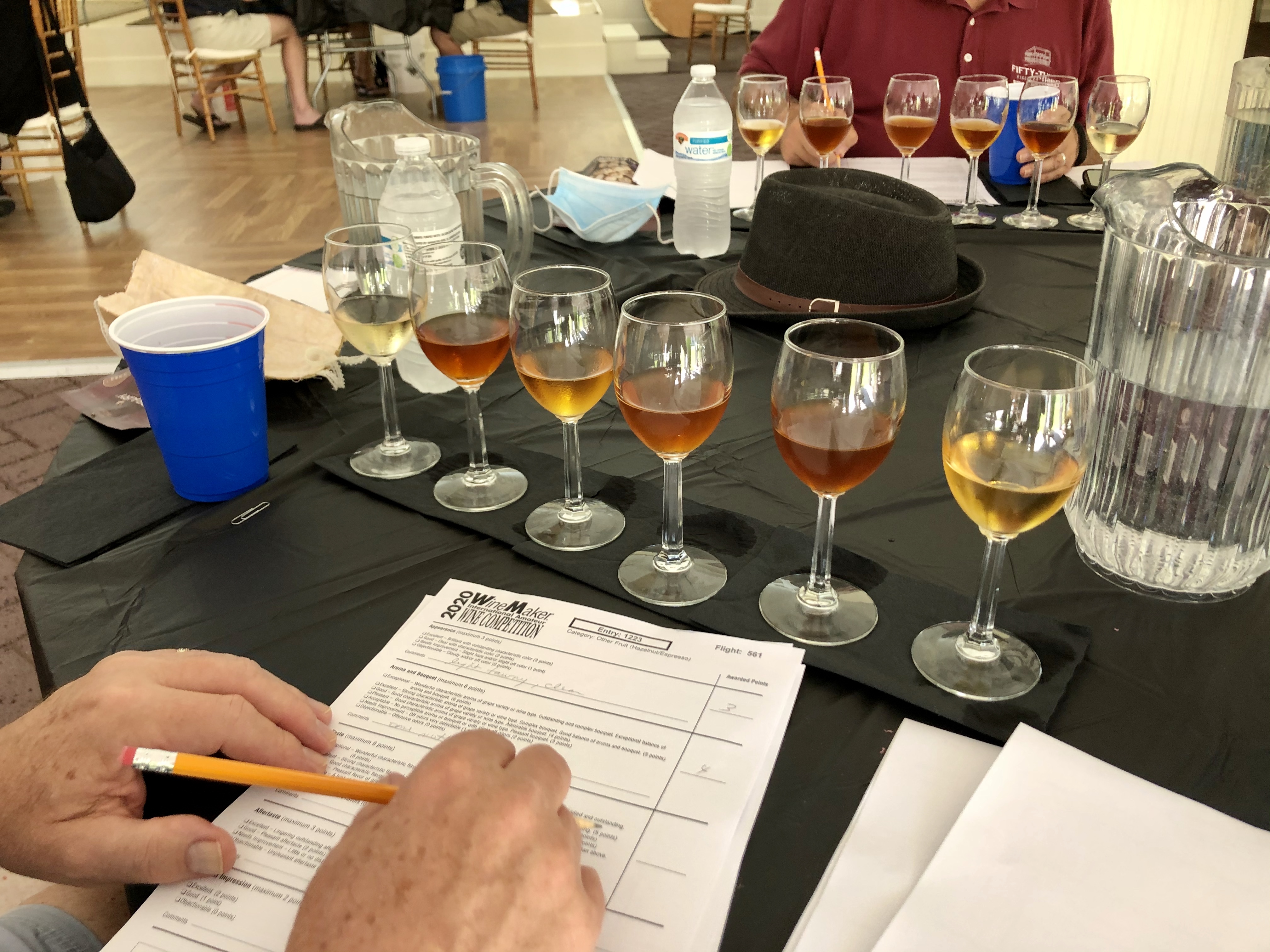
I often joke that winemaking is almost 90% sanitation, and while the figure may be an exaggeration, the sentiment is not. The simplest way to prevent microbial flaws is to limit the ability of spoilage microbes to come in contact with your juice or wine. Thoroughly cleaning any organic material off of your winemaking equipment prior to rinsing with a citric acid and sulfite solution or other sanitizer should limit the chances of contamination. Some caution must be taken, however, to avoid using chlorine-based sanitizers like bleach or C-Brite, as those may form anisoles — the class of organic compounds responsible for cork taint.
In the wine itself, the same measures taken to limit oxidation will also help to prevent microbial flaws. Chief among them is maintaining a proper level of free SO2. Though quantified together, free SO2 exists in wine in two main forms: Molecular SO2 and bisulfite. Of these forms, molecular SO2 is the one with antimicrobial properties. As molecular SO2 concentration is affected by pH — concentration goes up as pH goes down — understanding a wine’s pH is critical for determining proper free SO2 levels. The concentration of molecular SO2 in any given wine may be calculated if the wine’s pH and free SO2 are known, and calculators like the one available at https://winemakermag.com/guide/sulfite or at www.winebusiness.com/calculator/winemaking/calc/60 make it even simpler. The specific concentration of molecular SO2 required to prevent microbial spoilage depends upon the specifics of the wine itself, but a concentration between 0.8 and 1.2 ppm is recommended for whites and wines with residual sugar, while a concentration between 0.6 and 0.8 ppm is sufficient for dry reds.
For wines that show signs of microbial contamination, there isn’t much outside of blending that may be done to correct them, but steps may be taken to limit the damage. First, sterile filtration (<0.45 microns) may be used to remove any remaining spoilage microorganisms. The wine should then be adjusted to the desired molecular SO2 level and stored in an appropriately sized container to limit ullage. Not only will this preserve SO2 levels, but it will also limit dissolved oxygen — an important resource for aerobic microbes like the ones that spoil wine.
A quick aside before leaving the discussion of microbial spoilage: Potassium sorbate, while effective at preventing re-fermentation by yeast, is an attractive carbon source for a myriad of spoilage bacteria and may be metabolized to form unwanted aromatic compounds like geraniol. Furthermore, sorbate forms the bubblegum-like aromatic compound ethyl sorbate when it reacts with ethanol, which might not be offensive in sweet, grapey Concord wines, but isn’t welcome in a bone-dry Riesling. I’m well aware that sorbate is an effective tool for home winemakers looking to prevent in-bottle fermentation, but I saw evidence of its use in wines that absolutely did not need it — those wines scored lower than they would have without the addition of sorbate. As a rule, sorbate should always be used in conjunction with sulfite, added immediately before bottling, and only in wines where residual sugar is desired.
Go for the Gold: Conclusions
Part of what makes winemaking fun is the subjectivity of it. Everybody has a different set of aromatic, textural, and flavor preferences, and that’s on display in every wine competition. While personal preference informs whether or not you enjoy a wine, most wine judges know that like or dislike isn’t what they’re being asked to evaluate. The parameter that is most important to assess when judging a wine is how well it was made. Whether it’s a fresh, sweet Niagara or a bold, dry Cabernet, the correctness and cleanliness of a wine ultimately means far more than the personal quirks of a judge’s palate.
Though it’s true that a flaw here or there might actually make a wine more charming, the pace and demands of a wine competition mean that flaws are generally a key factor in determining a wine’s score. Luckily, most of the flaws seen in wine competitions are easily preventable if you know what to look out for and act accordingly.
Now that you know a little more about some of those preventive steps, it’s time to put them to work in your home cellar. If you follow this advice and diligently defend against common flaws, I’m willing to bet it’ll show in your medal count next year.


